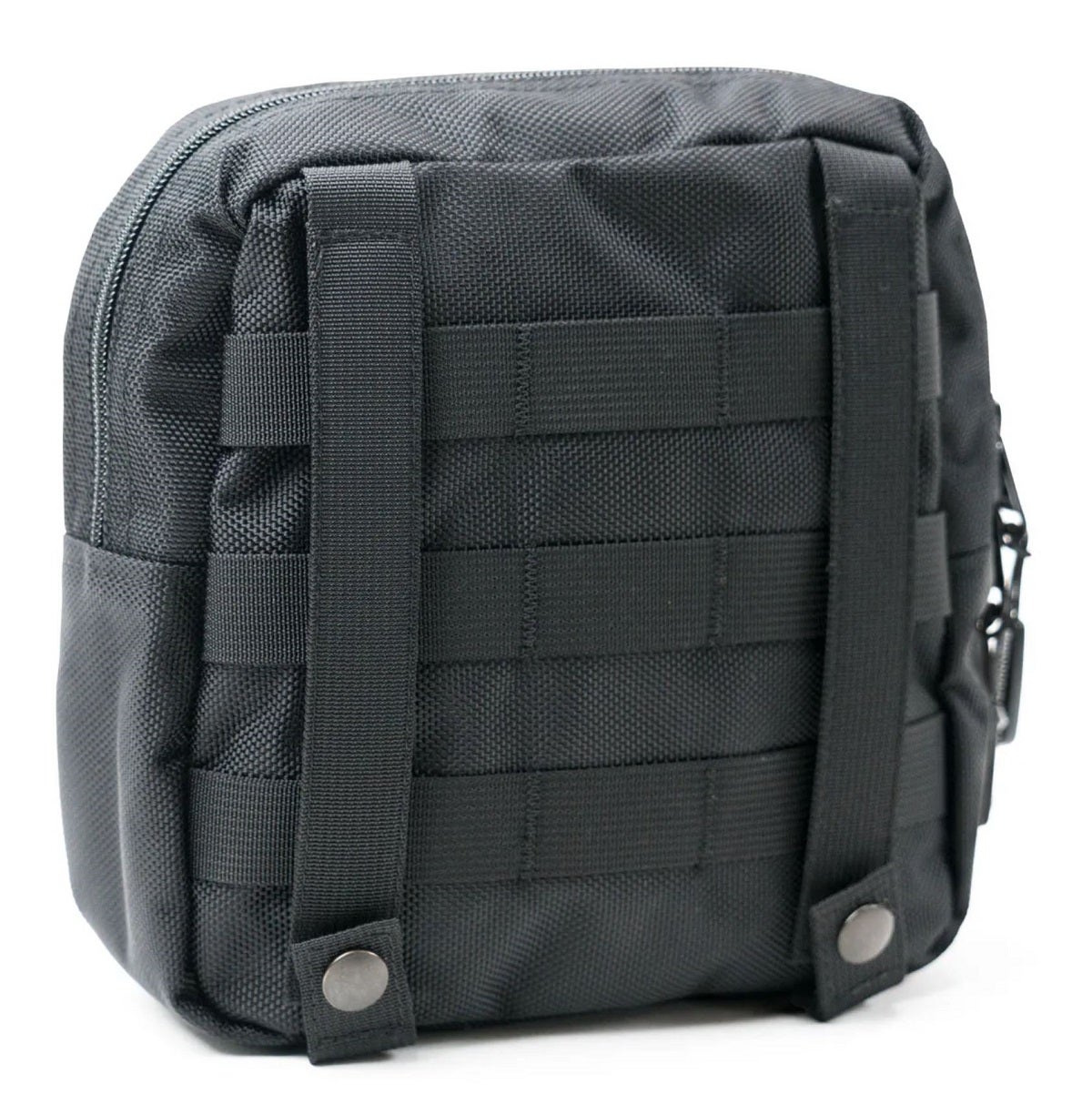What is MOLLE, Exactly? Gear Webbing Explained
Travis Olander 12.21.22

We cover a lot of webbed gear (like Vanquest’s Katara 16 EDC Bag). Nearly all modern tactical bags, packs, vests, and pouches use the MOLLE system, or a variant of it: Grids of fabric that act as connectors for more equipment. So, it begs the question of: what is MOLLE exactly?…
What is MOLLE, Exactly?
Officially, MOLLE (“Molly”) is the acronym for the U.S. military’s Modular Lightweight Load-Carrying Equipment. It’s the current-issue standard for all U.S. military and NATO branches’ kit, including rucksacks, magazine pouches, first aid kits, and so on.

Except MOLLE stuff isn’t technically what we civilians use when we’re buying a new 5.11 bag, some AR-15 mag pouches, or a plate carrier. All the webbing you find on backpacks and “civvy stuff” is actually PALS, or Pouch Attachment Ladder System equipment. PALS is the de facto standard for all the modular gear that we know and love – like 5.11’s TacTec Vest.
The PALS Webbing Standard

If these measurements look oddly familiar, it’s because this is the standard PALS webbing setup: Rows of 25mm tall nylon, stitched to provide 38mm rectangular attachments, with 25mm of spacing between each row. If you ever find that some PALS webbing is a bit loose, that’s because one patent dictates 40mm spacing between each stitch. To improve modularity, most PALS gear includes fabric rows where there would normally be 25mm spaces. This provides more vertical attachment points; the user simply needs to skip every other section when threading their equipment through the webbing.
History of MOLLE/PALS
We take these attachment systems for granted. But the simple-at-a-glance PALS webbing is the result of decades of U.S. military research. The 19th-century soldier had to carry spare uniforms and undergarments, cooking gear, navigational aids, ammunition, blankets and long, heavy, unwieldy rifles. These problems were exacerbated, even untenable, in World War I. The inclusion of gas masks, filters, helmets, optics, crew-served weaponry, and entrenching tools meant foot troops were often relegated to acting as mules more than marksmen.
By World War II, the U.S military had to address these shortcomings. Germany’s Blitz tactics and mechanized troops forced the war into a high tempo. The U.S. Army had begun its pursuit of a standardized, modular load-carrying setup to aid the fast-moving warfighter.
The M-1945 combat pack, M-1923 cartridge belt, M-1936 pistol belt, and M-1937 Browning BAR mag belt provided pouch attachment systems and straps that distributed weight across the waist. This freed up precious space in rucksacks and shoulder rigs. But even these belts had shortcomings: They were specialized and served single purposes. They had to be issued to individuals based on their combat roles.
The Individual Load-Carrying Equipment (ILCE)

The U.S. Army wanted a truly modular system: One standardized base attachment that could be issued to all infantry, with by-design pouches and containers that could easily be swapped in or out, dictated by personnel’s’ roles. This new modular system included a universal belt, shoulder straps to distribute weight, and pouches that served various purposes, like storing water, ammo, and first aid. Collectively, it was designated the M-1956 LCE (Individual Load-Carrying Equipment). The ILCE setup is the first iteration of what many of us recognize from Vietnam: The ALICE system.
ALICE (All-Purpose Lightweight Individual Carrying Equipment)

The ALICE System — which does, indeed, include the legendary ALICE Rucksack favored by hikers and preppers to this day — is considered the first truly modern, lightweight, modular load-carrying system. It’s the direct predecessor to MOLLE and PALS gear. The ALICE system starts with a base, the Individual Equipment Belt (#1) and Belt Suspenders (#3), followed by an array of pouches that could be installed, doubled or tripled, or excluded based on the individual’s role: The Small Arms Ammo Pouch (#2), Trench Tool Carrier (#4), Canteen Pouch (#5), and First Aid/Navigation Pouch (#6).
This was utilized in addition to the famed ALICE Pack system itself.

The ALICE Pack was the first modular, framed pack fielded by the U.S. Military. It included the aluminum frame (#1), cummerbund (#2), and waist strap (#3) to distribute loads. The shoulder strap system (#4, #5) included quick-release latches to ditch the gear in a hurry, while an optional cargo shelf (#6, #7) was included for carrying heavy equipment. The packs came in Medium and Large (#8, #9), issued based on the individual’s size.
PALS (Pouch Attachment Ladder System)
Developed before the military’s current-issue MOLLE gear, the Pouch Attachment Ladder System was first tested by the U.S Army in 1975. The PASGT, or Personnel Armor System for Ground Troops, was the first-ever plate carrier to incorporate nylon webbing across either side of the vest’s front. Each acted as simple attachments for grenade or compass pouches. But it wasn’t until 1997 that the Army’s Natick Labs, a research and development group, officially introduced PALS alongside the first MOLLE gear.
The multi-row PALS setup was made to eliminate the shortcomings of all prior modular setups. The CLE and ALICE systems allowed gear to sway, bounce, and come loose during vigorous movement. By using rows of straps to secure a piece of equipment, PALS largely eliminated these issues and allowed for more weight to be carried by a single attachment. The new system was largely adopted by ground forces in the early 2000s, during Operation Enduring Freedom.
Continuous Improvement
No gear system is perfect, which is why companies like 5.11, BlackHawk, and MaxPedition have made further updates to PALS webbing.
MaxPedition’s new “ATLAS” system uses laser-cut grids and composite materials to further improve weight distribution and form an even tighter connection between two pieces of gear. This thinner, lighter, stronger material also provides for physically smaller and less bulky connectors.
This writer still prefers the O.G. PALS/MOLLE setup. It gets the job done and it’s the most common type of connector you’ll find on bags, packs, and pouches today. I love my RUSH 2.0 Bag for its endless rows of webbing. Check them out here.

